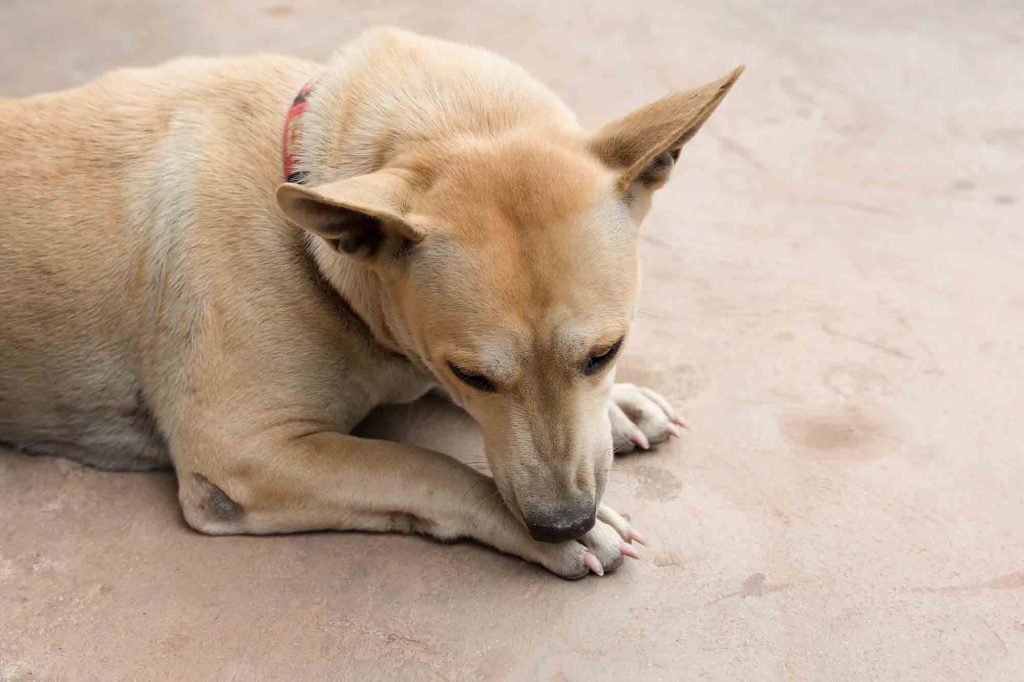What Type Of Animal Transfers Lice To Humans
 If you've ever had to bargain with a example of head lice, whether on yourself or your child, you know how upsetting it tin be. Besides the "ick!" factor, treating a case of lice is time-consuming, frustrating, and can pb to many missed days of school and work.
If you've ever had to bargain with a example of head lice, whether on yourself or your child, you know how upsetting it tin be. Besides the "ick!" factor, treating a case of lice is time-consuming, frustrating, and can pb to many missed days of school and work.
Simply like no one wants to see lice on their child, discovering your pet has lice can elicit a like response. The intense itching and scratching can make pets (and their owners) a chip crazy, and tackling the issue head on (no pun intended) is ideal.
But First, The Good News
Dealing with lice in pets is certainly not one of the more pleasant aspects of pet ownership. Fortunately, you lot don't take to worry about catching the gruesome pests from your dog or cat. Lice are species-specific , pregnant that they stick with one type of animal only. Cat lice can be transferred but to cats, dog lice only to dogs, and human being lice only to humans. Phew!
How to Spot Lice in Pets
Lice are non equally common on pets as fleas, and most pet owners are alerted to their presence because of their pets' persisten t scratching, chewing, and licking . Other signs of a lice infestation may include:
- Rough, dry, or matted coat
- Hair loss, most usually nearly the ears, cervix, shoulders, or groin
- Minor wounds or infections on the peel where lice have been feeding
- Nits – lice eggs that appear every bit small white specks on the pet'due south pilus
- Anemia / languor (rare, only may occur in smaller dogs or puppies)
- The presence of tapeworms or other parasites that can be spread past lice
Unlike fleas, which are night in colour and will probably zoom abroad equally soon as you see them, lice in pets tend to be tan or brownish, and by and large move more than slowly. The empty egg shells, also called nits, can exist distinguished from dandruff because they won't easily fall off the fur when ruffled.
Handling
Monthly flea and tick preventives take significantly reduced the occurrence of lice in pets, only it is still possible for a pet to contract lice through contact with an infected pet, such as at a canis familiaris park, customs-way daycare or boarding, or other situations where many pets of the same species congregate.
Treatment of lice in pets is relatively straightforward and, fortunately, much easier than treating human lice. Many flea shampoos and other insecticides will effectively kill lice, but sure products are not safe for use on cats or in a abode where cats live. Your veterinarian should be your first source of data when it comes to choosing a prophylactic and constructive product for your pet, and the protocol for safely administering it.
To help prevent a recurrence of lice, thoroughly wash and disinfect or dispose of your pet's bedding, training products, and other items your pet has come in contact with. Keep in mind that in order to eliminate the problem, any other pets of the same species that live in the dwelling must besides be treated for lice, regardless of whether they appear infected or not.
We certainly hope you never have to manage a case of lice in your pet, but if y'all practise, nosotros are here for you! Don't hesitate to contact your team at Alone Tree Veterinary Medical Center with your questions or concerns regarding lice in pets.
Source: https://www.lonetreevet.com/blog/what-to-do-about-lice-in-pets/
Posted by: hagemanhimpre.blogspot.com

0 Response to "What Type Of Animal Transfers Lice To Humans"
Post a Comment